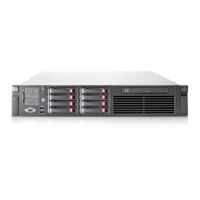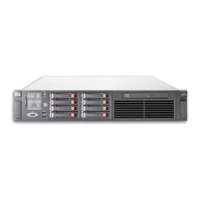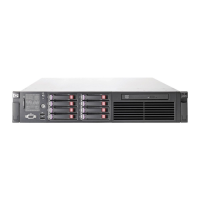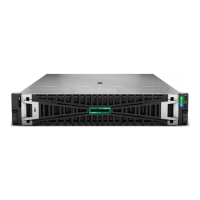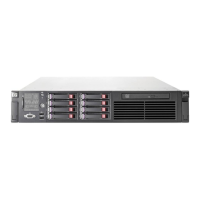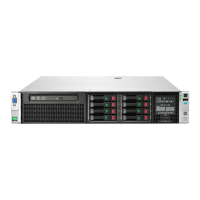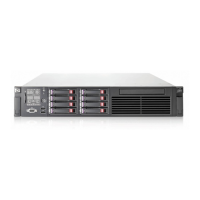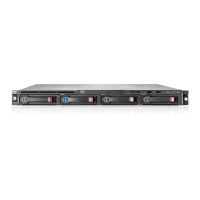LED3 pattern LED4 pattern Interpretation
— One blink every
two seconds
The system is powered down, and the ca
not yet been written to the dr
possible to prevent data loss.
Data preservation time is extend
power is available, as indicated by LED 2.
auxiliary power, battery power alone preserv
charged battery can normally preserve data f
The battery lifetime also depends on the cach
further information, refer to the controller Qu
website
(http://www.hp.com
che contains data that has
ives. Restore system power as soon as
ed any time that 3.3 V auxiliary
In the absence of
es the data. A fully-
or at least two days.
e module size. For
ickSpecs on the
HP
).
— Double blink,
then pause
The cache microcontroller is waiting for the h
communicate.
ost controller to
— One blink per
second
The battery pack is below the minimum charg
charged. Features that require a battery (suc
capacity expansion, stripe size migratio
temporarily unavailable until charging is co
e level and is being
h as write cache,
n, and RAID migration) are
harge
epending on the
mplete. The rec
process takes between 15 minutes and two hours, d
initial capacity of the battery.
— Steady glow The battery pack is fully charged, and posted write data is stored in
the cache.
— Off The battery pack is fully charged, and there is no posted write data
in the cache.
One blink per
second
One blink per
second
An alternating green and amber blink pattern indicates that the
cache microcontroller is executing from within its boot loader and
receiving new flash code from the host controller.
Steady glow — There is a short circuit across the battery terminals or within the
battery pack. BBWC features are disabled until the battery pack is
replaced. The life expectancy of a battery pack is typically more
than three years.
One blink per
second
— There is an open circuit across the battery terminals or within the
battery pack. BBWC features are disabled until the battery pack is
replaced. The life expectancy of a battery pack is typically more
than three years.
Hot-plug fans
CAUTION: To avoid damage to server components, fan blanks must be installed in fan bays 5
and 6 in a single-processor configuration.
Component identification 78

